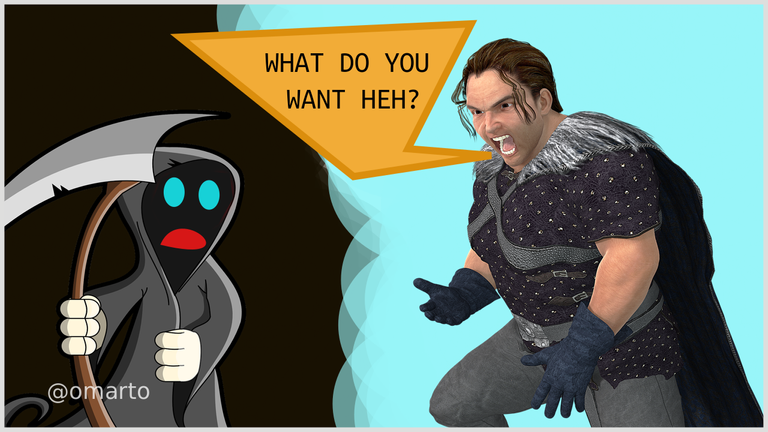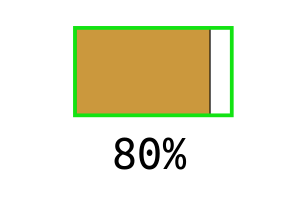Can you imagine that?

The first time I've read about an idea like this, I was mind blown!
How can someone think of death as a disease?!
So, I stumbled on this article a long time ago, where a Russian researcher in the biology field located at that time in the US was saying that she thinks death is a disease, and it needs to be eradicated.
I was like reaaally?!
That's strange, that's a powerful statement, but you know, she is a researcher in that field, so I thought she probably can contribute to a topic like that in an effective way.
She wasn't saying that we will cure death today, but just the idea was powerful.
We learn that there is a cycle, called the cycle of life, we learn that we are gonna die, it's part of it, right? And, and what about religion? What happens after death?
You go to paradise or you go to hell (depending on your religion, not every religion includes after life events and I'm simplifying).
Then, after some time, I've listened to a podcast from CGP Grey and he was stimulating this idea again, because he doesn't want to "die".
Something that he has also said in his latest FAQ video, and what could be the underline meaning behind "The Fable of the Dragon-Tyrant", a really good story.
The Fable of the Dragon-Tyrant
So, once upon a time a dragon terrified a kingdom, inducing some to fight.
They tried and tried to win against it, without success, so the dragon started demanding 10 thousand humans to eat.
The dragon begun to be considered and taught as part of the natural order by the king himself.
"The dragon is helping the kingdom by not getting into overpopulation and also by giving a meaning to the human life, making it shorter" said the king.
Becoming accepted, attacks against the dragon ceased.
Not just that, new jobs were born.
But one day, a dragonologist succeeded in destroying the dragon's scale, thanks to a very sharp material.
Getting to that moment was a step by step process, turning in a possibility what seemed impossible before.
So, now, after the proof of concept, what if a huge projectile would've been made to kill the dragon?
With enough technicalities and enough funding, that could've become more than a possibility the dragonologists explained with a proposal to anyone who would listen.
People were skeptical at first, but then after learning about the project and how it could become a reality, they were intrigued. The king once read about the plan, announced an open hearing.
In the event some people argued that the dragon was a necessity, that killing it would undermine jobs, and killing the dragon would make life longer and vain. But others argued instead, how the dragon was bad, how it killed in the end everyone.
So, the king announced that he would fund the research.
People thought about how if something like this would've happened before, how many would've been still alive.
The first 10 years were no success but thanks to the seriousness of the people involved and thanks to the purpose, they continued, leading at the twelve year of research to success.
Preparations were started, but a guy run and screamed to the king, telling him to stop the train.
He heard that his father was on it, and that the train would arrive just five minutes before the missile could attack the dragon.
But the king refused, fearing any disruption could alert the dragon, remembering between himself his wive, one of the victims of the dragon.
If the research would've started just before, probably the ones whom they miss, would've been still alive.
In the end the missile was launched, the dragon killed, and everyone became happy.
To get to that point, to that future, many old assumptions were eradicated, like the invincibility of the dragon, thus building a better world to live in.
Perspective
Now, cool and all, but what the researcher and CGP Grey are doing here, is not saying: "here you go, get that the cure and live forever".
They want you to change what you see and how you see death today.
Nullifying older assumptions to not be in the "five minutes before making it" event.
Not even one century ago, no one could've imagined that living 70 or 80 years could've become the average life span, but now we do.
One hundred and twenty years is seen today more or less as the upper limit.
What makes this scenario different from getting from the 40-50-whatever average life span of the older generations to what is now, is that now, in a scenario like this you are not improving to get to the life maximum potential, you are improving to increase the life maximum potential to forever or at least more than our today upper limit life span.

Psst, research in longevity has made good advances, and probably the best factor to "cure" death is to "cure" aging, to get to living a healthier and more fulfilled life.
What is possible today that would benefit the people alive right now?
Senescent cells
Human cells do not live forever, however they, at some point, die.
Every time they divide, they copy their chromosomes, losing a little bit of the extremities of the DNA.
To prevent this from becoming a serious problem, we have telomeres which protect the end of the chromosome from deterioration or from fusion with neighboring chromosomes.
But after a number of division, telomeres are not present anymore, so the cell becomes a "zombie", a senescent cell.
They do not die and they cause problems in the long run like kidney failure and diabetes. The more you get older, the more you have of them :(
Some scientists genetically modified (more specifically engineered) some mice, killing their senescent cells as much as they wanted.
The results were that, modified mice became more active, getting a more functioning heart and kidney, and they were less involved with cancer.
They generally, and astonishingly lived 30% more than mice without this treatment.
But we humans, are, you know, more complex than mice. To kill all senescent cells without harming other cells is not an easy job.
But there is an other mechanism.
Most cells do die without any external intervention naturally, so it was discovered that a protein that is normally reproduced to indicate to the cell to die, in senescent cells is not activated in the same way.
So, scientists injected this protein into mice, aiming at the senescent cells, and 80% of them died. They even regrew hair and they became generally healthier.
NAD+
Our organism's fundamental unit is the cell. It has a multitude of functions, but as we age, cells do get less job done. One of these parts that works in a worse way is NAD+ a coenzyme which is critical for regulating cellular aging and maintaining proper function of the whole body.
When you are fifty you have half of NAD+ as you had when you were twenty. Lower amount of it is linked to a bunch of diseases.
It cannot enter into cells directly, so the very good idea is to make it possible to enter thanks to more flexible substances and than building NAD+ inside of the cell.
"In 2016 multiple trials on mice showed that they boosted the multiplication of skin, brain, and muscle stem cells" as reported by Kurzgesagt.
Rejuvenation, better repair of the DNA and a slightly increased lifespan is what they got.
Stem cells
Stem cells are biological cells that can differentiate into other types of cells and can divide to produce more of the same type of stem cells.
But as we age, they decline.
Without them we break, and in mice scientists noticed that as stem cells disappeared they got more diseases.
When stem cells were injected from baby mice into the hypothalamus (a part involved in regulating many bodily functions) of middle-aged mice, they got a better working brain and muscles, than the ones who didn't get any treatment.
They also lived 10% longer on average.
In an other study, again using stem cells, scientists got stem cells from mice embryos hearts and injected them in older mice hearts.
"They had improved heart function, could exercise 20% longer, and their hair regrew faster" as told by Kurzgesagt.
All of these experiments were made on mice, they are more useful as proof of concept.
And you? what do you think?
You can find a subreddit that talks about this, they say: "The goals that are part of this subreddit's theme are being worked on in the form of very early research, and the expected time frame of such advances hitting the market are years away, but we are here to follow the progress."
Sources:
Death Halloween Skeleton
Man Rage
CGP Grey video
Kurzgesagt video
The other images are made by moi :)

✅ @omarto, I gave you an upvote on your first post! Please give me a follow and I will give you a follow in return!
Please also take a moment to read this post regarding bad behavior on Steemit.
Great post!
:)
Congratulations @omarto! You have completed some achievement on Steemit and have been rewarded with new badge(s) :
Click on the badge to view your Board of Honor.
If you no longer want to receive notifications, reply to this comment with the word
STOPCongratulations @omarto! You received a personal award!
You can view your badges on your Steem Board and compare to others on the Steem Ranking
Do not miss the last post from @steemitboard:
Vote for @Steemitboard as a witness to get one more award and increased upvotes!
Non si scrivono freddure sotto post altrui, non stai iniziando benissimo, anche se il post che hai scritto fa notare una certa esperienza qui su steemit...
Freddure in che senso? 😬